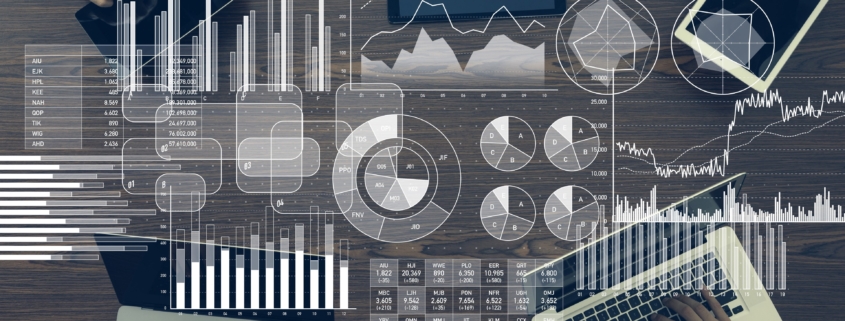An Introduction to Predictive Marketing Analytics
The constant evolution of technology never ceases to disrupt the retail industry, meaning that marketers must be constantly adapting to the evolution of technology and how they leverage it to reach potential customers. Apparent in the fall of book sales and decreased traffic to brick and mortar locations, we have already seen how the introduction of technology is forcing marketers in the retail industry to rethink their strategies and adapt them to the ever-changing world of technology. The ability for marketers to adapt to new technology allows companies to maintain their relevancy in a high traffic, constantly changing, and highly competitive space of the internet.
One way marketers are advancing technology to their benefit is implementing predictive marketing analytics to predict future consumer behavior and how to capitalize on it. Harnessing data, marketers are able to make well informed predictions about future customer behavior, customer churn, customer lifetime value, and even improve their pricing decisions.
Customer Churn
Customer churn occurs when you lose a customer, and is an essential factor to track for a business’ long-term financial health. Using various “data points such as a customer’s average time between orders or las purchase date, predictive analytics can help you better measure churn risk” (Retail Dive). By recognizing the customers with a higher likelihood of leaving you early on, there is a greater chance of retaining their loyalty as a customer. One way many top brands capture those with high churn probability is through employing an extensive win-back campaign.
Customer Lifetime Value (CLV)
Leveraging historic CLV, revenue generated from all orders placed by a customer to date, in combination with predicted CLV, total dollars a customer is expected to spend in the next year, marketers are able to better measure the effectiveness of their acquisition and retention strategies. However, determining CLV for customers not apart of a predetermined spending plan can be difficult to calculate without the use of predictive analytics. Using predictive analytics to dissect current data inputs such as past purchases can allow you to better calculate future spend. One might enroll their customers with high CLV in a rewards program, while offering customers with low CLV a discount initiative.
Pricing Decisions
Many retailers still hold onto the strategy of waiting to drop prices until traditional sales periods, which results in losses of advance sales. In result, the company’s revenues are impacted due to large price fluctuations. Setting prices accurately can increase profit margins and can be done so through predictive marketing. Artificial intelligence in combination with predictive analytics can track inventory levels, competitor prices, and collate demand to determine what prices should look like (Sisense). By reaching pricing objectives and being proactive in calculated price changes, you can help differentiate your store analytics and give you better insight and control over promotions.
The amount of data collected in retail, especially e-commerce, spans various sectors that should be used by marketers. Utilizing all this collected data through e-commerce and other retail, marketers should leverage predictive marketing to analyze consumer behavior at a deeper level. By better understanding your customer and their habits, companies can better attract new customers, retain current customers, and increase market share. Rather than surrendering to the advances of technology, harnessing it and the features it offers can better your marketing strategies and improve the overall performance of your company.





